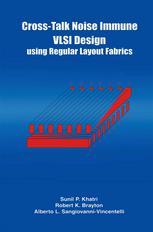

Most ebook files are in PDF format, so you can easily read them using various software such as Foxit Reader or directly on the Google Chrome browser.
Some ebook files are released by publishers in other formats such as .awz, .mobi, .epub, .fb2, etc. You may need to install specific software to read these formats on mobile/PC, such as Calibre.
Please read the tutorial at this link: https://ebookbell.com/faq
We offer FREE conversion to the popular formats you request; however, this may take some time. Therefore, right after payment, please email us, and we will try to provide the service as quickly as possible.
For some exceptional file formats or broken links (if any), please refrain from opening any disputes. Instead, email us first, and we will try to assist within a maximum of 6 hours.
EbookBell Team

0.0
0 reviewsThis book was motivated by the problems being faced with shrinking IC process feature sizes. It is well known that as process feature sizes shrink, a host of electrical problems like cross-talk, electromigration, self-heat, etc. are becoming important. Cross-talk is one of the major problems since it results in unpredictable design behavior. In particular, it can result in significant delay variation or signal integrity problems in a wire, depending on the state of its neighboring wires. Typical approaches to tackle the cross-talk problem attempt to fix the problem once it is created. In our approach, we ensure that cross-talk is eliminated by design. The work described in this book attempts to take an "outside-the-box" view and propose a radically different design style. This design style first imposes a fixed layout pattern (or fabric) on the integrated circuit, and then embeds the circuit being implemented into this fabric. The fabric is chosen carefully in order to eliminate the cross-talk problem being faced in modem IC processes. With our choice of fabric, cross-talk between adjacent wires on an IC is reduced by between one and two orders of magnitude. In this way, the fabric concept eliminates cross-talk up-front, and by design. We propose two separate design flows, each of which uses the fabric concept to implement logic. The first flow uses fabric-compliant standard cells as an im plementation vehicle. We call these cells fabric cells, and they have the same logic functionality as existing standard cells with which they are compared.